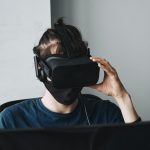Compliance training might have gained its reputation as a boring and tedious business formality, but it no longer has to be. With the integration of futuristic and highly engaging VR technology, employees can cease the yawns and sighs that often occur during long training sessions, and embrace the fully immersive simulation experience of VR.
VR Compliance Training Accommodates Casual, Part-time and Full-time Workers
Most would agree that compliance training is often a text-heavy learning process regardless of the industry. Employees feel having to ingest a wealth of information all at once in a short period of time is overwhelming. In addition, the delivery and assessment provisions are inflexible. This is very pertinent for casual and part-time employees who rely heavily on their limited days of available work. It is not uncommon for these employees to decline offers of work so they can complete mandatory training. This is where the integration of virtual reality with compliance training programs becomes an efficient solution to consolidate an employee’s knowledge and application ensuring they meet accreditation requirements.
Unlocking the Potential of Compliance Training Through VR and 360-degree Interactive Video
VR compliance training aims to improve operational efficiency as companies work with educators and learning design specialists to co-create highly relevant, detailed and very realistic scenarios. Through this incredible realism, VR opens up a virtual environment for employees to become proficient in compliance – to fulfil safe workplace requirements, follow standard operating procedures, address in-house company policies and prevent violation of industry regulations. It is crucial that every employee, whether full-time, part-time or casual, knows how to conduct themselves in the workplace to comply with legal obligations and responsibilities. If regulatory auditors were to quiz your employees on their knowledge of compliance, how would they perform?
So, how can virtual reality technology maximise the effectiveness of your compliance training? How can VR improve the compliance knowledge acquisition and retention of your entire workforce?
Knowledge Retention Like Never Before!
With VR’s lifelike experience, visual cues and sound, learning is consistently presented in a captivating and creative way. The more meaningful and visceral the experience is to the person, the more memorable and transferable the knowledge and skills to real-life workplace situations. This unique, immersive approach deviates from the traditional methods, empowering the individual to take charge of their own learning. Once a user puts on a VR headset, they enter an online 3D workplace scenario where they interact with clients, patients or colleagues; need to prioritise, manage their time, make decisions and receive feedback. A human instructor greets the user and guides them along their training journey.
Inside VR: Example of a Compliance Immersion
Depending on the industry, immersion takes place in a replica of the employees working environment, making it highly realistic. For example, an employee who works in a bar, will find themselves immersed in the virtual setting of a bar surrounded by equipment, glasses, bottles, with environmental acoustics, conversations and other people. The employee clicks on a video which unfolds the scene of the following workplace dispute: an intoxicated man turns violent after the bartender refuses his drink order. From here the employee watches three different videos of how the bartender acts in the situation and then uses critical thinking to discern which of the videos represented the correct use of compliance competence. Through this role play, the employee is able to correlate the actor in the video with his own experience of working as a bartender.
A recent study by the PwC (Price Waterhouse Cooper) supports this immersive learning approach, as participants of VR were emotionally connected to VR and 360-degree video. It was found this prompted the participant to process information at a faster rate. Coupled with that, the study also found VR to be the most effective modality of learning compared with e-learning and classroom learning, with results showing that v-learners were 2.3 times as connected as e-learners. VR is changing the learning landscape and is becoming a reputable choice for workplace learning, as it has been proven that the more connected an employee is to these occupational simulations, the rate at which they can retain this knowledge increases.
On-demand Learning That Supports Making Mistakes
Compliance training using VR may be a faster learning process, however there is always room for growth. Similar to a paper exam, employees use VR’s controller to select answers to multiply choice questions. As employees have a number of different scenarios to go through, there is a good chance that employees may struggle with specific areas. This can be identified as responses are recorded, easily tracked and reviewed using data analytics. Employees can then re-visit modules that they may have struggled with as having a refresher session is as simple as putting on a VR headset and starting the module again.
VR compliance training creates a genuine and distraction-free experience for employees. This is a distinct advantage particularly for part-time or casual workers as they can learn at any time, in a safe, non-threatening enclosed virtual learning environment. Some workers may feel pressured and not perform as well when learning and practicing in the presence of their boss or manager. VR training is an opportune experience for part time and casual workers who may feel as if they lack knowledge due to their limited hours on the job. As VR training is self-directed, without distractions the individual is immersed in the virtual world. They have a more meaningful experience and accurate assessment. This leads to the higher retention of new knowledge, as well as identifies specific areas that require further development. From a business perspective, companies are able to use data analytics when submitting training audit reports. Moreover, employees can repeat training to consolidate learning frameworks for compliance related procedures. When large corporations have all employees onboard with this method of training, it supports best practices and in turn a compliant-adhering workflow. As evident in the PwC report, it is realistic to experience a noticeable increase in productivity and efficiency.
Cost Vs Value
VR is an investment that facilitates the protection of a company’s losses as it helps to ensure employees feel confident, knowledgeable and safe in the workplace. One of the core areas of compliance training is in the area of health and safety. Through visualisation and simulation of the employees daily work environment, the employee is placed in highly vulnerable situations (virtually), many of which can only be experienced in the virtual world. Some health and safety simulations that must comply with legislative requirements and workplace responsibilities include:
- Prevention and alleviation of chemical explosions
- Prevention of fatal injuries when working at heights
- Safe fire extinguishment and following recommended procedures
- Working with electric hazards
- Self-defence training in cases of robbery
- Training psychiatrists and psychologists in the treatment of mental illnesses
- Training health care and aged care workers in the management of patients with varying needs
- Distribution – the unloading and loading of goods
- Examination of the human body and brain through telesurgical applications
- Transportation- how to drive cars, forklifts and other vehicles
- Navigational awareness, teamwork and survival strategies, effective techniques to manage militants.
It is through these simulations that employees practice and acquire skills, to build up a repertoire of knowledge that is indispensable to their field. VR accurately encapsulates hazardous environments to show the consequences of employees who do not follow recommended procedures.
For workers, understanding compliance goes beyond sticking to protocols and legal obligations. Through immersive 360-degree video, employees are better equipped with renewed awareness in mitigating dangerous situations and high risk practices, anti-social behaviours, loss and damage of product. Developing best practices aims to prevent the business from not only breaching laws and paying hefty compensation claims that are associated with poor incident management, but to prevent injury and loss of life.
Studies have revealed VR’s in-depth coverage of risk observation has a positive impact on employees’ attitude which is reflected in their change of behaviour. This is one of the important ROI, cost-saving benefits for corporations. The PwC study found that VR training cost 52% less than classroom training and 8% less than e-learning courses.
VR compliance training provides reassurance of standardising and stream-lining the organisation’s processes. Training is uniformed and consistent providing employees with well-prepared, structured learning framework and support in the adoption of safe, clean work practices.
Written by Lauren Tizzone
Similar articles to check out:







